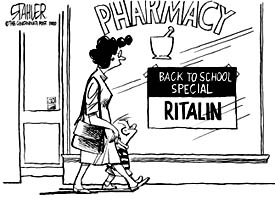It will likely not come as a surprise to anyone that dangerous toxins are in the environment, both in the cities we live as well as our homes. We are careful to monitor where household chemicals are stored and do research on such toxins as carbon monoxide, lead and radon. What needs to be remembered is that there are many chemicals, dyes, and other potentially dangerous substances to examine as well.
These concerns have garnered controversy because many of these products have been deemed “safe”. However, the tests done by researchers indicate that at the very least there is cause for some caution. The good news is that more activists and groups are making people aware of what dangers exist. When there is awareness and education, changes can be made. Success in any type of production is reliant on consumers, and if enough consumers make their concerns known, changes can be made. Alternative products without harmful chemicals will become the higher demand.
We will be discussing some of the chemicals and additives that have been found to cause reactions as mild as a simple skin irritation to potential carcinogens, or cancer causing agents. Education about what is put into our environment will challenge those who are responsible to make changes as well as limit our exposure to these toxins when possible.
Air And Water Concerns
 The Environmental Protection Agency has the job of locating and identifying superfund sites, or sites that are required to report their output of toxic chemicals. Cleanup requirements are monitored, and any violations are supposed to be reported and made public information. To find the chemical releases in any given area, simply go to the EPA website http://www.epa.gov/myenvironment/ and enter the zip code of the place in question. Click “go” to see a complete rundown of the toxic releases and offending sites.
The Environmental Protection Agency has the job of locating and identifying superfund sites, or sites that are required to report their output of toxic chemicals. Cleanup requirements are monitored, and any violations are supposed to be reported and made public information. To find the chemical releases in any given area, simply go to the EPA website http://www.epa.gov/myenvironment/ and enter the zip code of the place in question. Click “go” to see a complete rundown of the toxic releases and offending sites.
According to the EPA, six pollutants fit the criteria for being toxic releases. These are sulfur dioxide, lead, particulate matter, carbon monoxide, nitrogen dioxide, and volatile organic compounds (including ozone). Sulfur dioxide is most often found in areas of refineries, steel mills, and power plants fired by coal or other fuel. The biggest daily offender of carbon monoxide are the areas of heavily congested auto traffic. Any industry that has combustion processes exposes us to nitrogen dioxide, which is suspected to be toxic to development and the respiratory system. The ozone layer, which is essentially the major component in the smog caused by traffic congestion and factory pollutants, has been a concern for many years because of the potential damage to even healthy lungs and cardiovascular systems. Particulate matter from the air pollution comes in varying sizes, with the smaller particles having the easiest time breaking through our defenses.
Many of these toxins can be found in the soil and water as well as in the air we breathe. Lead is often found in old water pipes. It is known to have many potential health effects, especially on the cardiovascular system, brain development, and the kidneys. Old homes and furniture may have lead based paint, which was especially a concern with parents using older baby cribs passed down from family members. While many of these toxins cannot be completely avoided, education in knowing where they are and what might be causing that rash or persistent cough is important. Education gives a community a voice that can enact change if enough people speak.
Check Around The House!
There are a lot of things that come to mind with household dangers, most of which are simple common sense. Make sure outlets are covered, make sure wiring is updated, keeping the kitchen and the bathroom areas clean, and always keep cleaning products stored away from small hands. However, it’s important to note some of the dangers that might not come as readily to mind. Small symptoms such as unexplained stomach discomfort or a rasping cough might be eased if the offending products are tended to or removed.
 One commonly used household item that can be a potential danger is the cleaning sponge. The very thing that is meant to keep our kitchen and dishes clean can also be the perfect environment for germs and bacteria. It’s a good idea to make sure and replace kitchen and household sponges often. Mold is another hidden danger that may not be obvious unless professionally checked. Upon buying a new home, there should always be an inspection for hazards such as mold and proper upkeep and maintenance to keep mold from forming is essential to protect the family against this particular danger. Mold can cause serious physical reactions such as skin irritations, respiratory issues, and even neurological problems.
One commonly used household item that can be a potential danger is the cleaning sponge. The very thing that is meant to keep our kitchen and dishes clean can also be the perfect environment for germs and bacteria. It’s a good idea to make sure and replace kitchen and household sponges often. Mold is another hidden danger that may not be obvious unless professionally checked. Upon buying a new home, there should always be an inspection for hazards such as mold and proper upkeep and maintenance to keep mold from forming is essential to protect the family against this particular danger. Mold can cause serious physical reactions such as skin irritations, respiratory issues, and even neurological problems.
Even more important to know are the concerns about the products that are deemed “safe” and yet are under fire by many environmental groups. Food dyes such as Blue 1 and Red 40 have been found to cause allergic reactions in certain people. The studies have been conflicting as far as the carcinogenic dangers of these food dyes, but the acknowledgement of triggering allergic reaction is concerning enough. Another component in many baby bottles and other products made of polycarbonate plastic is bisphenola-A or BPA. It has been deemed safe, however the concerns are due to the incidents of early-onset puberty in girls and other dangers such as obesity and breast cancer. There is a strong effort to make all pending products of this nature BPA free.
What Can Be Done?
It can seem very overwhelming to think of what can cause harm right in our own homes or in the air we breathe and the water we drink. It’s important not to let that hinder the education that is needed. Being aware not only gives an edge in protection against these toxins, it lets the industries in question know that people are aware. Producers of these toxic chemicals will have to answer to more regulations if the people speak loudly enough. One thing that can be done is to keep up with the EPA website. They are constantly updating their data and will show what sites are superfund, or under regulation to report chemical outputs and means of disposal.
Prevention of such chemicals as BPA and food dyes/additives does require making sure that it is known exactly what is in the products used at home. If plastic baby bottles and nipples are used, consider buying from some of the environmentally friendly stores and websites that offer BPA free products and natural rather than chemical dyes. Reading what is in the products around the house and researching their potential side effects is very important in knowing what is truly lurking in the cabinets and shelves.
Prevention of mold buildup in the home is greatly increased simply by making sure all appliances such as water heaters, washing machines and refrigerators are working and not leaking anywhere. Mold thrives in wet, moist environments and the longer that it is unattended, the worse it will get. Rather than spend the money to clean and remove mold, prevention by simple household maintenance will go much farther in keeping the family safe.
 We can’t live in a vacuum – at some point, we are going to be exposed to substances that can be harmful. The key is to reduce the chance of that exposure by knowing exactly what the dangers are and where they might be hiding in the home or environment.
We can’t live in a vacuum – at some point, we are going to be exposed to substances that can be harmful. The key is to reduce the chance of that exposure by knowing exactly what the dangers are and where they might be hiding in the home or environment.
For more information, check out the Environmental Protection Agency website at http://www.epa.gov
Written by Angela Sangster, Copyright 2011 HonestInformation.com
 Asperger Syndrome often makes itself known to parents when their child starts any kind of pre-school or setting where peers are present. Children with Asperger’s are likely to have a lot of trouble adjusting and don’t interact well with others their age. There is a ‘blank’ effect when exposed to anyone else’s pain or discomfort – in other words, they lack any real empathy for others. They don’t react well to changes in routine and will often miss the cues of body language or a change in a person’s tone of voice. For example, if the child is misbehaving and the parent speaks in a firm, loud voice telling them to stop, the response will likely be to continue the behavior. They simply don’t ‘get’ that changes in tone can mean anything significant.
Asperger Syndrome often makes itself known to parents when their child starts any kind of pre-school or setting where peers are present. Children with Asperger’s are likely to have a lot of trouble adjusting and don’t interact well with others their age. There is a ‘blank’ effect when exposed to anyone else’s pain or discomfort – in other words, they lack any real empathy for others. They don’t react well to changes in routine and will often miss the cues of body language or a change in a person’s tone of voice. For example, if the child is misbehaving and the parent speaks in a firm, loud voice telling them to stop, the response will likely be to continue the behavior. They simply don’t ‘get’ that changes in tone can mean anything significant.









